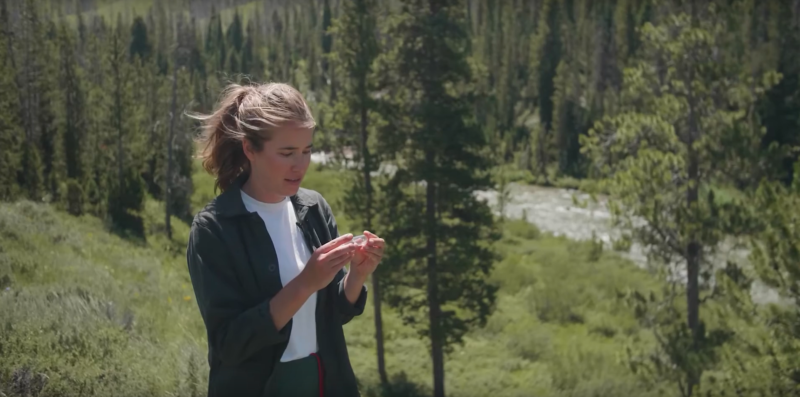‘Woven Together Art and Arachnids’ Art Exhibit | National Museum of Wildlife Art
Woven Together: Art and Arachnids is a collaboration between the National Museum of Wildlife Art and Jackson Hole community members. This exhibition was inspired by and features Beyond Beauty, an episode from the Museum’s Bisoncast video series that stars local spiders—including the recently-discovered mason spider (Castianeira sp.)
National Museum of Wildlife Art

Links
- Woven Together finds connection, beauty – The Jackson Hole News & Guide
- Museum Short In Film Fest – The Jackson Hole News & Guide
- Record setting summer at the National Museum of Wildlife Art – Buckrail, ArtFix Daily
Built to last a day: The function and benefits of spider mound nests – Ethology

Built to last a day: The function and benefits of spider mound nests Maggie Raboin, Damian O. Elias Ethology
Abstract
Nests are crucial to the survival of offspring and reproductive success of the animals that build them. These benefits are subject to change over time due to fluctuating conditions inside and outside of nests. For many species, nests are assumed to benefit offspring until they disperse and therefore, nest destruction prior to offspring dispersal results in reduced reproductive success for parents. However, the consequences of nest destruction to reproductive success, or lack thereof, remain largely unstudied across diverse taxa. Here, we experimentally investigate the function and benefits of nests of a mound-building spider. Mason spiders (Castianeira sp.) are wandering spiders that build intricate nests (mounds) on top of their egg sacs. Their offspring inhabit egg sacs at nest sites for up to 7 months, including through winter. We find that despite requiring hundreds of collecting trips and many hours to construct, mason spider nests remain for a small portion of time that offspring occupy nest sites. Our study finds that nest benefits change over time, likely explaining this dynamic. Nests greatly reduce the rate of predation and parasitism of egg sacs by 19.1% and offspring mortality within egg sacs due to abiotic factors by 19.9%. These effects are only present the few days following nest construction. Our study illuminates the idea that nest destruction does not always result in reduced reproductive success for nest builders. We suggest that nest durability, the ability of a nest to withstand environmental conditions, may be subject to natural selection and a critical, yet understudied, aspect of parental care.
Built to last a day: The function and benefits of spider mound nests – Ethology

Research Funding
Bisoncast Video Series: Beyond Beauty | National Museum of Wildlife Art
Who decides what is beautiful and what is valuable? Can a creature that crawls into our nightmares also be vital for our survival, and, even charming?
Bisoncast is an award-winning video series produced by the National Museum of Wildlife Art in Jackson, Wyoming. Each episode features a closer look at art from the Museum, and considers cultural and historical influences, current relevance, and connections to the natural world.
Last summer, I was fortunate to spend a day shooting with representatives from the Museum and the film crew from Teton Gravity Research at one of my field sites in the greater Yellowstone area.
Beyond Beauty Awards















